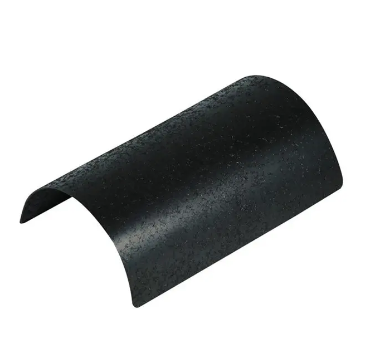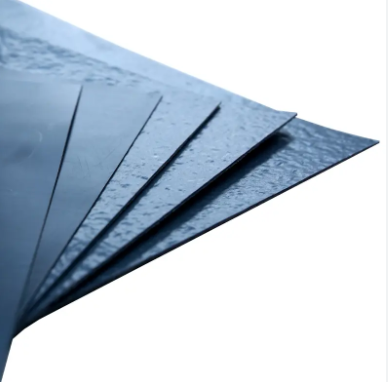- Understanding the Role of Geomembrane Liners in Waste Management
- Innovations in Geomembrane Liners for Water Management
- Geomembrane Liners: A Comprehensive Guide
- The Future of Geomembrane Liners in Civil Engineering
- Geomembrane Liners: Enhancing Landfill Stability
Manager:Alvin Wang
WhatsApp:+62 8983806051
Tel:+86 10-5797-1075
Email:steelwang@okorder.com
Address:3rd Floor, No.2 Building, No.1 Sanlihe Road
Why is HDPE geomembrane so cheap?
hdpe Geomembrane is a material widely used in civil engineering and environmental applications, known for its durability, flexibility, and impermeability. HDPE geomembrane is an essential component of landfills or ponds’ linings and wastewater treatment facilities as well as other uses across the globe aimed at preventing liquid infiltration into the ground. Among many other reasons why people often pose questions concerning its affordability is its inexpensiveness. We will discuss some of the aspects that make it affordable in this article.

Understanding HDPE Geomembrane
Before moving on to how cost-effective it is, one must understand what HDPE geomembrane entails. Made from high-density polyethylene resin, HDPE geomembrane functions as an artificial liner. This kind of thermoplastic has highly efficient chemical resistance levels, mechanical intensities and flexibility abilities which renders it useful in various applications requiring containment.
Material Costs
One of the main explanations for the low price of HDPE geomembranes lies with their raw ingredients which are made from high-density polyethylene resins. The availability of HDPE resin is widespread due to extensive manufacture thus making its market prices to be competitive. Moreover, technical improvements regarding polymer production practices have added further impact towards reducing costs pertaining to extrusion grade polymers manufactured from high-density polyethylene (HDPE).
Manufacturing Efficiency
The efficiency by which manufacturing processes are carried out on HDPE geomembranes ensures they can be created using joinery techniques such as hot air welding and adhesive bonding systems, without generating any waste at all during production process; these types are called seamless liners. The most modern plants fitted with automated machines can make a lot of them while maintaining very low expenses per unit – this should minimize shipping or production costs too thanks to economies resulting from scale-based benefits linked with this technology’s upscaling possibilities.
Market Competition
Geomembranes usually have numerous manufacturers and suppliers competing for market share. Such a level of competition is conducive to better cost management practices as well as service innovation, which ultimately contributes to lower prices that can be enjoyed by customers. This means HDPE geomembranes have become very affordable in relation to other materials used in lining works.
Long-Term Cost Benefits
While the up-front cost of HDPE geomembrane may be competitive, its long-term cost benefits are equally significant. By virtue of their durability, chemical resistance and water tightness, these membranes can result into reduced maintenance, repair and replacement costs over their lifespan. It also aids in a lot of savings through leakages and seepages that would otherwise have translated into costs related to regulatory concerns or environmental contamination clean up efforts.
Versatility and Adaptability
HDPE geomembrane is a cost-effective solution for many containment applications due to its versatility and adaptability. It is flexible enough to fit on irregular surfaces without causing any problem to them such as warping or shrinkage even during ground movements thus reducing extensive site preparation activities or installation labor required before it lies down there properly. In addition, variations in thicknesses, colors and additives of the product will not greatly increase the overall outlay for different projects whose material specifications might need to be modified during production stage without raising financial expenses.
Environmental Considerations
Moreover, the use of HDPE geomembrane provides environmental benefits that add to its overall affordability. Recycling plastics made from HDPE geomembranes after they are no longer usable reduces waste generation rates while minimizing environmental impacts associated with landfills that contain such items. More so, it helps prevent soil pollution resulting from containment failures in case there are spills from tanks holding hazardous substances like oil or chemicals which would require costly remediation processes including digging up affected sections before clean fill can be utilized again.

Conclusion
In conclusion, several factors make HDPE geomembrane affordable, such as low-priced raw materials, efficient production processes, market rivalry, long-term cost saving aspects, versatility and adaptability and environmental concerns. For containment applications that are reasonably-priced, HDPE geomembrane is now a popular selection among engineers, constructors and project initiators who want trustworthy and inexpensive lining solutions. Increased demand for the material has also led to development of more advanced manufacturing technologies and practices in relation to material science and sustainability which are expected to improve the cost-effectiveness of HDPE geomembrane in future.
- Previous:Which is better HDPE geomembrane or polypropylene?
- Next:Does HDPE geomembrane crack easily?
-
2024-12-05Geomembrane Liners: A Comprehensive Guide






